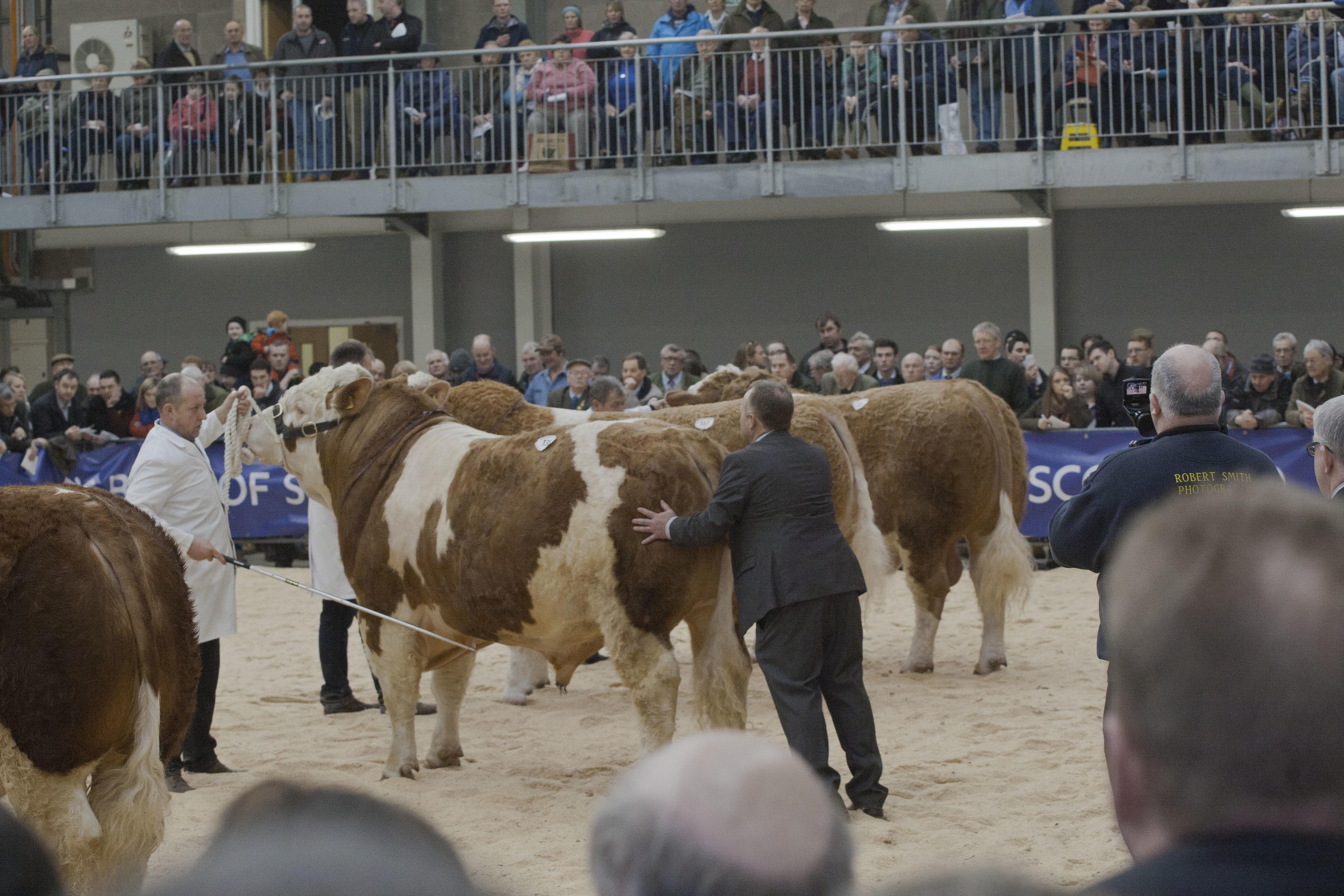Farmers planning to buy a new bull are being urged to pay attention to estimated breeding values (EBVs) when making their purchasing decision.
According to SAC Consulting beef specialist Gavin Hill, EBVs combined with a visual inspection of the bull and a knowledge of your own herd and farming system, are key when buying a new bull.
Addressing a group of farmers at an EBVs workshop at Mintlaw, Mr Hill gave a crash course on how to interpret breeding figures at a sale.
He said although figures were not the be all and end all, they did provide a guide for producers looking to introduce specific traits into their herd.
Accuracy was crucial when interpreting values, said Mr Hill at the event which was organised by Quality Meat Scotland and SAC Consulting.
“There are variations in accuracy from about 28% to 90% and if you want to buy a bull where the figures will stay pretty constant then what you are looking for is about 65% accuracy plus,” he said.
“Accuracy is against the breed average rather than the herd average.”
He said EBV information was now presented in a much more user friendly way at sales with a graph showing the average down the middle and bars to either side to indicate whether the bull was below or above average for certain traits.
However, farmers needed to be careful not to get caught out by differences in values for fat depth in different breeds.
In line with industry calls for cattle to have more fat cover, the Limousin and Charolais cattle societies switched to reward animals for extra fat. This means a bull with more fat cover will rank above average for fat depth. According to Mr Hill, the Aberdeen-Angus Cattle Society is about to follow suit with this.
The Simmentals are still rewarding for lean cattle so an animal with more fat cover will rank below average for fat depth.
Due to these differences, Mr Hill urged farmers to be careful not to compare EBVs between breeds.
“For example poor milk in a Charolais and poor milk in a Shorthorn are not the same because average milk production is higher in the Shorthorn anyway,” said Mr Hill.
“You have to remember what breed you are working with – you cannot compare breeds.”
Mr Hill also urged producers to weigh up the pros and cons of bulls and to remember that going for the highest EBVs all the time might not always be necessary.
“When you are looking at individual traits you don’t always have to go for the most extreme,” he said.
“You need to look at what’s important for your overall herd. The bulls you use need to be matched to your breeding cows and capable of producing what is wanted in the marketplace.”
Lastly Mr Hill sounded a word of caution over calving ease traits, reminding producers that calving success was 75% down to herd management and 25% down to genetics.
“Yes some bulls have poorly rated figures for calving ease. The information is there, and what a bull with poor calving figures is saying to you is ‘warning, I have the power to cause you severe problems if you do not manage your cows correctly’,” he added.
